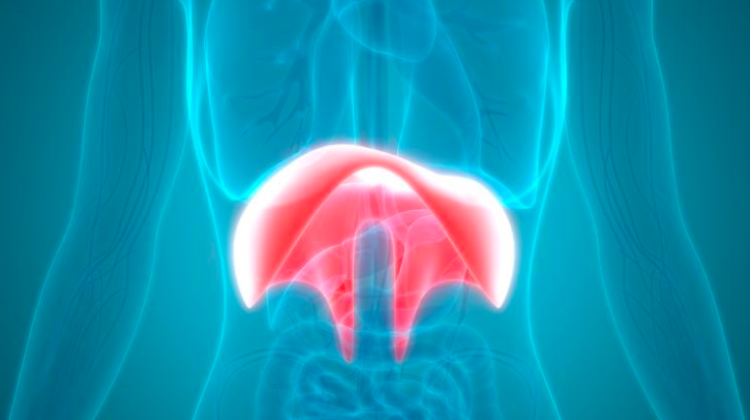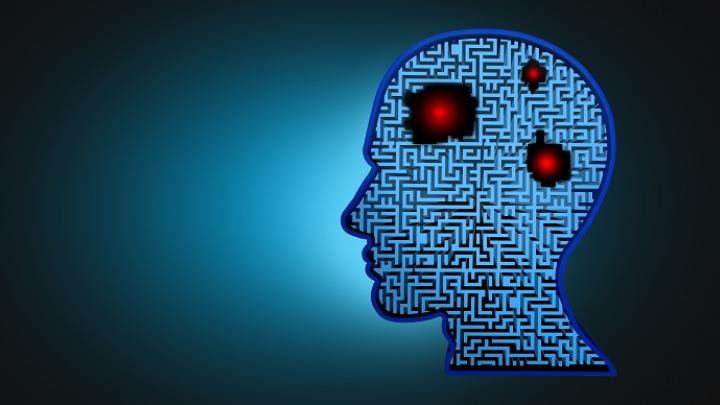Polish researchers described a previously unknown role of the diaphragm: it helps the body maintain balance
 Photo: Fotolia
Photo: Fotolia
The diaphragm has a previously unknown role in the body - it helps us maintain balance, scientists from Silesia demonstrated in their research. Their experiment shows that the greater the thickness and mobility of this muscle during the breath, the better the person`s balance.
This knowledge may be useful in the physiotherapy of people with balance disorders.
The diaphragm is primarily the main respiratory muscle and anatomical barrier that separates the chest from the abdomen. Its breathing activity also supports the work of the cardiovascular and lymphatic systems and ensures adequate stability of the lumbar spine.
"In our research, we have discovered an additional role that the diaphragm can perform. This role is associated with maintaining static balance of the human body" - says Dr. Janusz Kocjan from the Chair and Department of Thoracic Surgery at the Medical University of Silesia in Katowice. This is due to the fact that the diaphragm modulates the pressure in the abdominal cavity.
Researchers from his team now want to check if the diaphragm muscle breathing exercises can help maintain better balance. This can be important in the physiotherapy of people with balance disorders. Such disorders are dangerous and very common especially among people over 65.
Until now, three systems were considered to be responsible balance: visual control, vestibular system (part of the hearing organ, to which the labyrinth belongs) and somatosensory system (special receptors located in muscles, tendons, joint capsule) along with antigravity muscles. "We add the muscle of the diaphragm to that list. This is the fourth element that is responsible for maintaining balance" - says Janusz Kocjan. Research of the team from the Medical University of Silesia and the Silesian University of Technology was published in "PLOS One" https://doi.org/10.1371/journal.pone.0208697
A DIAPHRAGM PROBLEM - A PROBLEM WITH BALANCE?
The fact that the diaphragm is linked to maintaining balance can be proven, for example, by showing that diaphragm disorders can lead to balance disorders. But diaphragm dysfunctions are not often diagnosed.
Previous studies have shown that diaphragm dysfunctions occur after chest surgery, for example after removal of lung cancer. "During surgical intervention in the thorax, there is a change in the pressure between the chest and the abdominal cavity, which is related to diaphragm dysfunction" - describes Janusz Kocjan. He adds that the diaphragm movement is limited and its position is higher than it should be.
In other studies, balance disorders have been observed in patients after lung excision due to cancer.
Scientists decided to investigate the relationship between these phenomena.
"The starting point was that the diaphragm provides stabilization for the lumbar spine where the centre of gravity of the human body is conventionally located. We assumed that proper stabilization within the central part of the body affected the global balance and maintaining the vertical position of the body" - explains Dr. Kocjan.
His team examined people before surgical excision of pulmonary parenchyma due to cancer and the same people after the surgery. "This allowed to see how their balance changed when the diaphragm function was compromised" - the researcher says. For comparison, research was also conducted on a control group of healthy subject. In total, it was over 100 people.
It turned out that after lung surgery, the balance parameters indeed deteriorated along with the deterioration of the diaphragm function. Importantly, patients who underwent less invasive, endoscopic VATS (videothoracoscopy) procedure had less affected diaphragm function, and thus better balance parameters than patients, who underwent classic thoracotomy associated with a large chest incision.
PROPERLY WORKING DIAPHRAGM HELPS
The article describes who has better body balance parameters. "We have documented that the larger the diaphragm is at the moment of inhalation, the more it translates into better parameters for maintaining body balance" - the scientist says.
The research also showed that the better the mobility of the diaphragm during normal breathing and deep inhalation, the smaller the person`s imbalance in a standing position. In other words, the correct function of the diaphragm helps to maintain balance.
This is an interesting information considering that according to epidemiological data, 80 percent of people have respiratory disorders - they do not breathe properly with the diaphragm, but with the chest. In these people, the diaphragm`s mobility is smaller, which in turn may lead to balance disorders, researchers predict.
FIND A NEW BALANCE IN KNOWLEDGE ABOUT BALANCE
According to Dr. Kocjan, the imbalances observed in the study are not visible to the naked eye. But they are noticeable in the studies on the stabilographic platform used to measure individual body balance parameters. These tests clearly show the direction of imbalance (whether the subject puts more weight on the front or back of the body, left or right side) and how the body`s centre of gravity moves in relation to the ground (what distance it has travelled and in which area it has moved).
Dr. Kocjan explains how individual elements responsible for balance work. The vestibular system in the inner ear informs the nervous system of the position of the head in space, its relation to the neck and other parts of the body. In order to keep the body in balance, we also require information from specialized receptors (so-called proprioceptors) about the position of particular parts of the body, their movement in relation to the fulcrum or position relative to each other. Thanks to this, when, for example, we close our eyes and raise one hand, we are able to determine its position in relation to other parts of the body. The postural system in the form of adequate tension of antigravity muscles is also important in maintaining bipedal posture.
"Thanks to our research, it is now known that the muscles responsible for the balance also include the diaphragm (respiratory muscle), which is not an antigravity muscle" - adds Dr. Kocjan.
Scientists have not yet confirmed how the work of the diaphragm affects balance. But they do have several hypotheses. In one of them, they assume that there are specialized receptors of deep sensation in the fibres of the diaphragm that are attached to the lumbar spine. "If the pressure in the abdominal cavity is too low, the receptors get a stimulation that is too weak, and as a consequence the body balance parameters deteriorate" - the scientist says. (PAP)
Author: Ludwika Tomala
lt/ agt/ kap/
tr. RL
Przed dodaniem komentarza prosimy o zapoznanie z Regulaminem forum serwisu Nauka w Polsce.
















